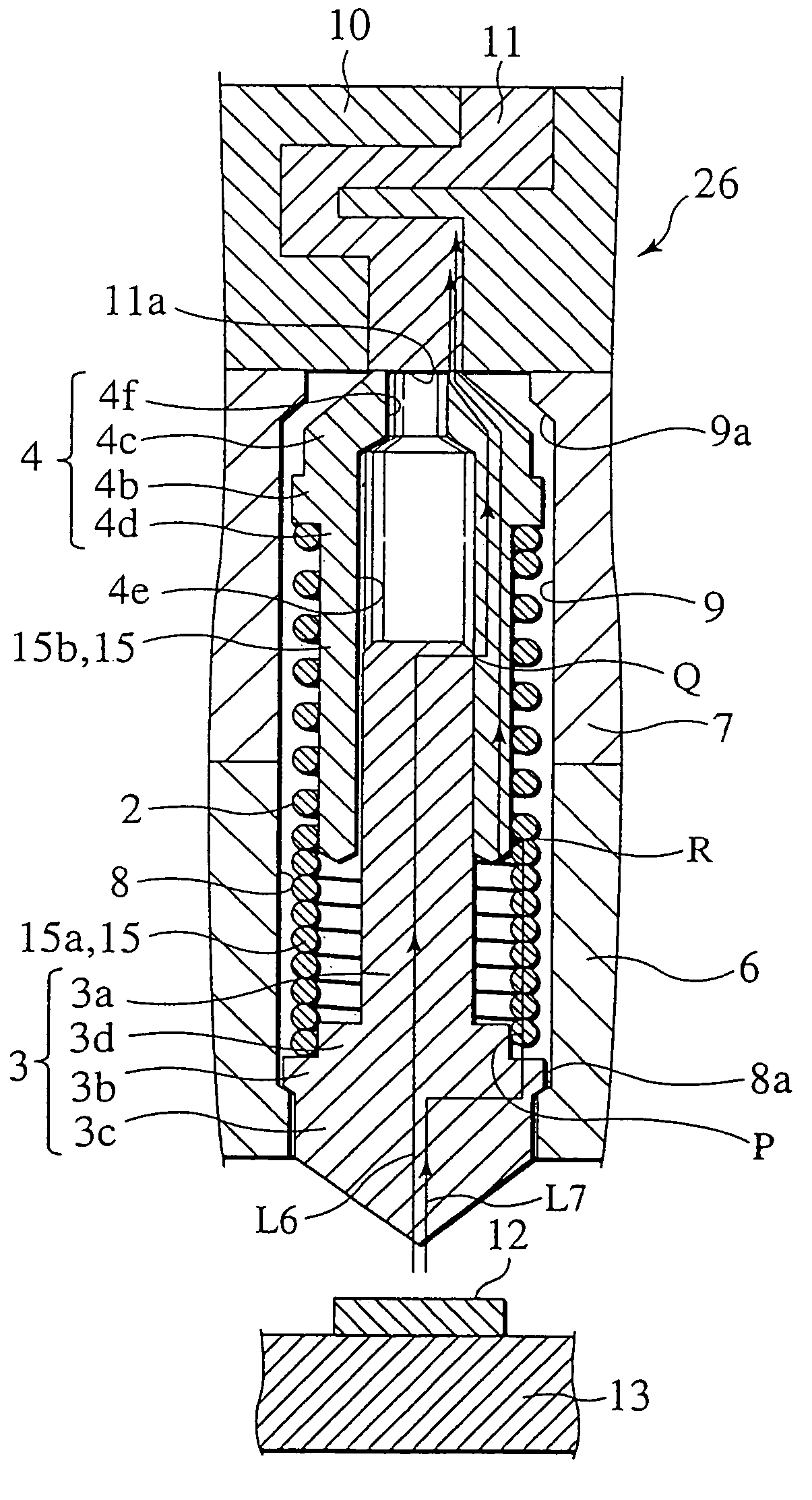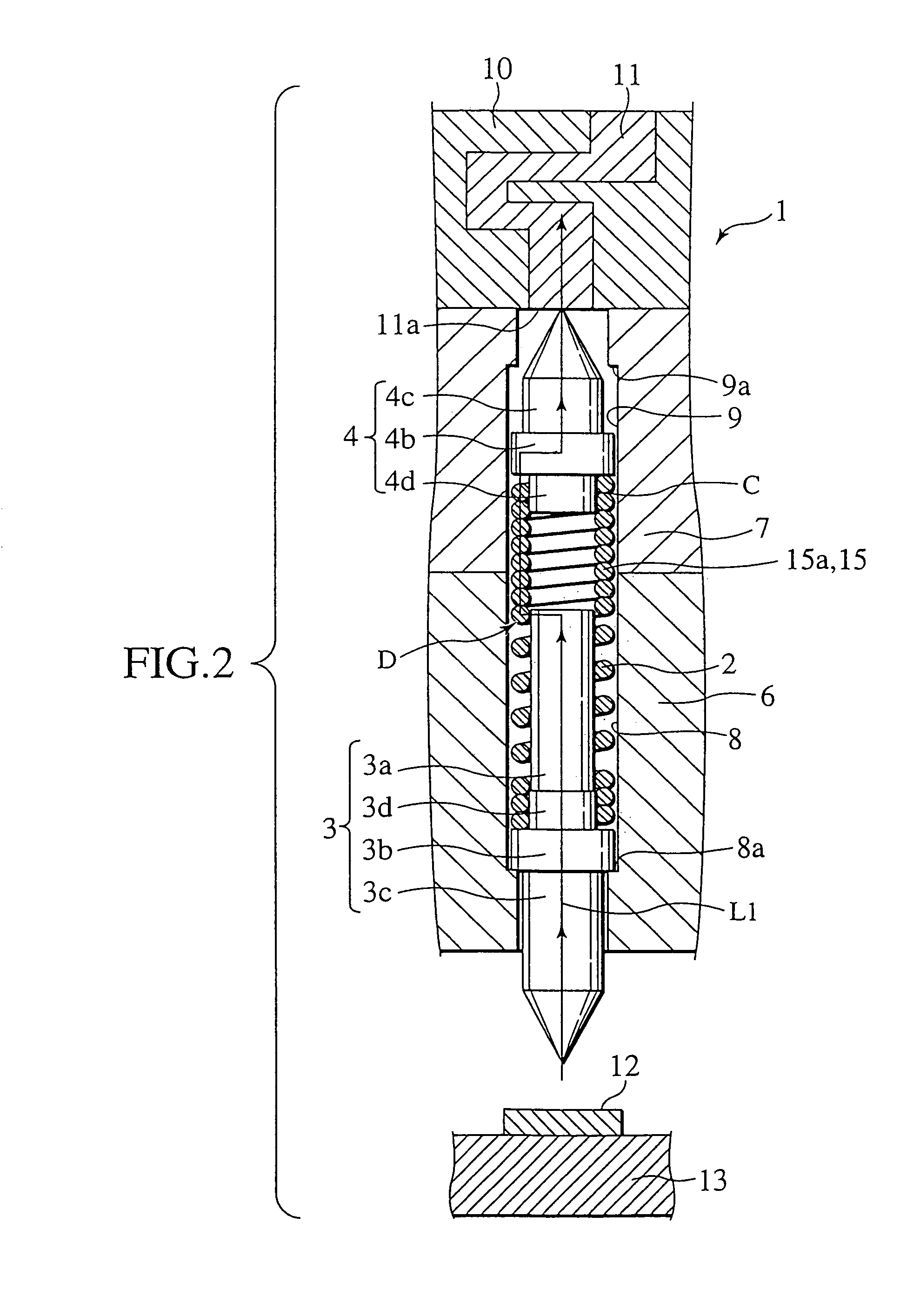Microcontactor probe assembly having a plunger and electric probe unit using the same
a microcontactor and probe assembly technology, applied in the field of microcontactor probes, can solve the problems of reducing the service life of the substrate, reducing the accuracy of inspection, and reducing the accuracy of inspection, and achieve the effect of improving the accuracy of inspection
- Summary
- Abstract
- Description
- Claims
- Application Information
AI Technical Summary
Benefits of technology
Problems solved by technology
Method used
Image
Examples
first embodiment
[0035]FIG. 1 shows an electric probe unit PU according to the invention. The probe unit PU is constituted as a probe card, including a both-sided performance board H2 as a relatively large substrate and a substantially flat transformer H1 as a relatively small repeating substrate fastened to a downside of the performance board H2 by screws, and with at least one electric probe module PM fastened to a downside of the transformer H1 by screws. The probe unit PU is supported by a computer-aided multi-axis positioning robot called “tester” (not shown), so that the probe module PM can be set in an arbitrary position within a designed spatial region with an optimal attitude for inspection of a target (not shown), such as a printed circuit board, a micro chip, or a semiconductor wafer, to be probed by electrical contact for acquisition or sampling of current data or signals, such as of current conduction or performance checks.
[0036]The electric probe module PM is constituted by a substanti...
second embodiment
[0054]In the second embodiment, the auxiliary spring 16 is made of a coil spring and is positioned outside of the coil spring 2 resiliently biasing the paired plungers 3 and 4, thereby to provide a coaxial double coil spring structure with the coil spring 2.
[0055]More specifically, the auxiliary spring 16 is made of a coil spring having an adequately larger diameter than the coil spring 2 and is inserted into the support hole 8 formed to have an adequately larger diameter than the support hole 9, to be extended between a bottom surface 7b of the holder 7 and the flanged part 3b formed to have an adequately larger diameter.
[0056]With the microcontactor prove 20 thus constituted, the conical tip of the needle head part 3c of the lower plunger 3 is brought into resilient contact with the target 12 of inspection formed on a substrate 13 for inspection. As shown by solid line arrows in FIG. 3, a conduction path L2 of signals in inspection extends from the target 12 through the lower plun...
third embodiment
[0062]FIG. 4 shows a microcontactor probe 21 according to the present invention. The probe 21 has the same structure as that of the above-described microcontactor probe 20 except that it has a stepped flanged part 3b in a lower plunger 3.
[0063]More specifically, the flanged part 3b of the plunger 3 according to the third embodiment is constituted with a large-diameter flanged part 3e having a larger diameter than that of an auxiliary spring 16 and contacting a coil end of the auxiliary spring 16, and a small-diameter flanged part 3f integrally formed on one side of the large-diameter flanged part 3e and insertable into the coil of the auxiliary spring 16, on which part 3f a boss part 3d is formed.
[0064]Thus the microcontactor probe 21 properly has the same functional effects as those of the microcontactor probe 20 and also secures stable operation of the lower plunger 3 by mounting the plunger 3 with the small-diameter flanged part 3f inserted into the coil of the auxiliary spring 1...
PUM
 Login to View More
Login to View More Abstract
Description
Claims
Application Information
 Login to View More
Login to View More - R&D
- Intellectual Property
- Life Sciences
- Materials
- Tech Scout
- Unparalleled Data Quality
- Higher Quality Content
- 60% Fewer Hallucinations
Browse by: Latest US Patents, China's latest patents, Technical Efficacy Thesaurus, Application Domain, Technology Topic, Popular Technical Reports.
© 2025 PatSnap. All rights reserved.Legal|Privacy policy|Modern Slavery Act Transparency Statement|Sitemap|About US| Contact US: help@patsnap.com



